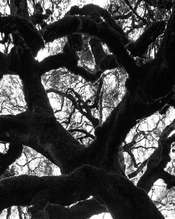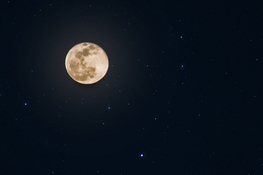Alan - The question seems framed around b&w film. A much different ballgame than color film. There are numerous ways to strategize a high contrast exposure; but with any of them it's important to meter both the deepest shadow gradation values you hope to retain perceptible texture in, as well as the highlights at the other end. Many people resort to Zone theory and "minus" develop the film, or use some analogous form of compensation development to squeeze the overall sandwich together. But that comes with the penalty of diminished textural differentiation in the midtones. In other words, they stomp on the sandwich until it's thin enough to eat.
Combined with that strategy, they often overexpose the shadows to get the shadow values up off the toe and onto the straight line of the characteristic curve; for instance, using Zone III shadow placement with Tri-X. But that just exacerbates the overblown highlight issue in high contrast scenes. That worked better back when long scale contact printing papers like Azo were in frequent use, but now seems counterproductive for regular silver gelatin printing.
What I prefer to do is choose a film with a long straight line to begin with, which is capable of good shadow gradation way down into Zone I; and at the present time, Tmax films are the answer to that, but only if the metering and development are correct. Just a matter of fine-tuning one's skills. Then there are all kinds of potentially helpful tweaks like staining pyro development, use of VC papers, supplemental contrast masking, etc. I really enjoy all of that, plus the challenge itself of high contrast scenes. But I want to preserve all the native depth and sparkle. No polarizers or drastic minus development for me.
Any let me just emphasize once again that this is the kind of thing I do all the time. It's entirely feasible. Tomorrow I'll be out in a foggy seaside low-contrast setting. But just a short distance away driving to or from, I might well encounter a direct sun deep forest situation in the redwoods with extreme contrast. I can handle either using TMax. The only better films were the true 200's like past Super-XX and Bergger 200. The current pseudo-200 of Foma 200 does itself have an exceptionally long straight line, but is otherwise a massive headache in deep shade, with abominable long exposure characteristics and disappointing quality control. So I didn't include that under forest scenes per se; been there, done that, learned my lesson. A slow fine-grained film which did work was Efke 25, but it's gone too.












